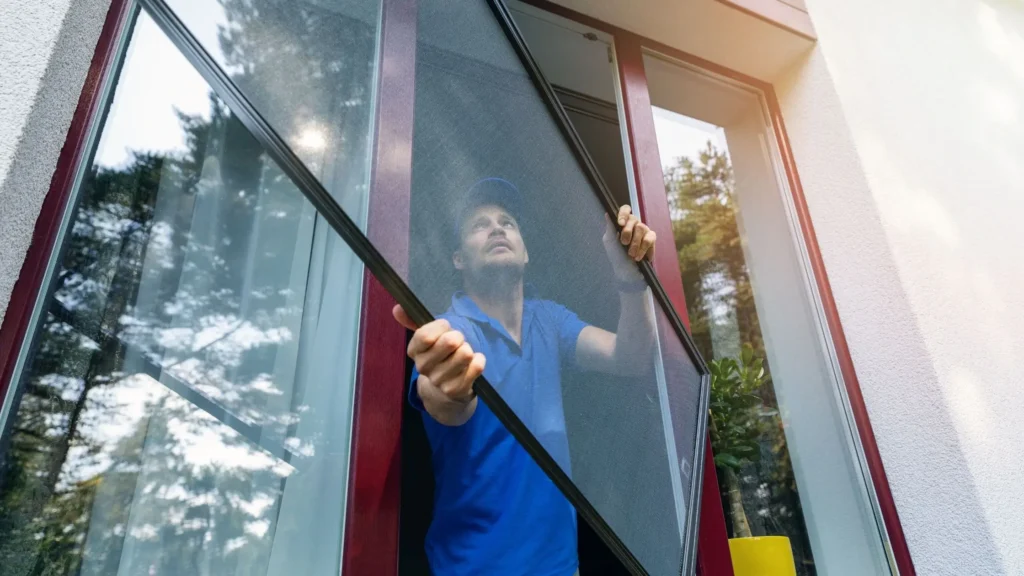When you’re thinking about replacing or repairing window screens, one of the first things you need to know is what are standard window screen sizes?. Having this knowledge can save you time, money, and a lot of frustration when shopping for new screens or planning a home project. In this guide, we’ll walk through everything you should know about window screen sizes, types, and tips to find the right fit for your home.
So, let’s break it down together and make things super easy!
Why Knowing Window Screen Sizes Matters?
Understanding what are standard window screen sizes is important if you want your windows to function properly and look great. Window screens that don’t fit can leave gaps that let in bugs, dust, and even rain. Plus, buying the wrong size wastes time and money, especially when it comes to home window screen replacement projects.
Whether you’re looking to buy screens for windows or trying to replace an old broken window screen, starting with the right size makes everything smoother.
What Are the Most Common Standard Window Screen Sizes?
You might be surprised, but there isn’t just one standard size! Instead, there are a few popular measurements most homes stick to when ordering window screen replacement. Here are the most common:
- 18 inches x 14 inches
- 20 inches x 20 inches
- 18 inches x 16 inches
- 36 inches x 24 inches
These sizes usually cover most window screen for home needs. But remember: older homes and custom-built houses might have non-standard window dimensions, meaning you’ll need custom screens.
If you’ve been asking yourself where to get window screens, many hardware stores and home centers stock these standard sizes, and some even offer cutting services for precise fits.
How to Measure for a Replacement Window Screen
Before you rush to replace window screen, it’s crucial to measure your existing screen correctly. Getting the measurements wrong can be a costly mistake.
Here’s a quick guide:
- Width: Measure from the left to right inside the window frame (metal lip to metal lip).
- Height: Measure from the top to the bottom inside the window frame.
- Depth: Check how deep your frame is to ensure the screen sits snugly.
Always measure twice just to be safe! Accurate measurements help you avoid guessing how much does it cost to get your screen replaced because mistakes mean extra costs.
Standard Size Window Screens for Different Windows
Depending on the type of window you have, the standard size window screens vary slightly. Here’s how it typically looks:
Double-Hung Windows
Double-hung windows often use screens that are full height but half-width if the window opens vertically.
Sliding Windows
Sliding windows usually need screens that match one side of the window opening horizontally.
Casement Windows
Casement windows (the ones that crank open) usually have full-sized custom screens that match the entire opening.
Knowing your window type makes a big difference when choosing the right window screen windows for your space.
Custom vs Standard Window Screens
Sometimes, no matter how much you search, you just can’t find a screen that fits. That’s where custom screens for windows come in. If your window isn’t one of the typical sizes listed earlier, you’ll need a made-to-order solution.
Custom options are usually a bit pricier. While a roll of window screen material is cheap (around $15–$30), paying for a custom-built screen might cost you $50–$100 or more, depending on the frame material and size.
If you’re wondering how much to charge for rescreening a custom frame, it’s typically higher compared to standard frames because of the extra labor and material costs.
Window Screen Materials and Their Impact on Size
When choosing a new screen, material matters almost as much as size. Window screen mesh replacement comes in different types, and each affects the final fit slightly.
- Fiberglass mesh: Very flexible and forgiving for small measurement errors.
- Aluminum mesh: Rigid, requires exact sizing.
- Pet-resistant mesh: Thicker and heavier, sometimes needing stronger frames.
Each type changes how snugly your replacement window screen fits, so be mindful when picking out your materials.
Small Window Screens: Are They Standard Too?
Small windows — like those in basements or bathrooms — still need screens, but the sizes vary widely. Common small window screen sizes include:
- 10 inches x 14 inches
- 12 inches x 18 inches
- 14 inches x 24 inches
If you’re replacing a small screen, double-check if it’s a standard small size before opting for full customization.
Where to Get Window Screens and Replacements
Finding where to buy screens for windows isn’t hard nowadays. Here are the best places:
- Home improvement stores: Like Home Depot, Lowe’s, or Ace Hardware.
- Local screen repair shops: Great for quick window screen replacement services.
- Online retailers: Amazon, Wayfair, and specialist screen companies offer lots of options.
If you’re searching for where to get window screens quickly, calling a local shop can save you time compared to waiting for shipping.
How Much Does It Cost to Replace Window Screens?
So, let’s talk numbers. Generally, the window screens cost around:
- $20–$50 for standard sizes.
- $50–$150 for custom-made screens.
- $10–$30 for DIY window screen mesh replacement if you just rescreen an existing frame.
For home window screen replacement, always ask about labor fees if you’re hiring help. If you’re curious about how much does it cost to replace window screens professionally, expect about $35–$100 per screen, depending on material and size.
How to Fix a Window Screen Yourself
Fixing a window screen on your own isn’t as scary as it sounds. If you have a broken window screen, you can either patch small holes or replace the mesh entirely.
Here’s a basic DIY method:
- Remove the screen frame from the window.
- Take out the old spline and screen.
- Roll new screen material over the frame.
- Press in a new spline to hold the mesh tight.
- Trim off any extra material neatly.
With just a few tools — like a spline roller and utility knife — you can easily handle rescreen windows projects yourself!
Professional Window Screening Services: Eclips Service Hub
If DIY projects aren’t really your thing or you simply want a polished, long-lasting finish, you can trust the experts. Eclips Service Hub offers professional window screening services that cover everything from new installations to mesh replacements. They use durable materials and ensure custom-fit screens for any window size, no matter how unique.
Choosing Eclips means you’ll get expert craftsmanship, hassle-free service, and quick turnaround times, making your home safer and more comfortable.
Conclusion
Understanding what are standard window screen sizes makes the whole window replacement process much smoother. Whether you’re tackling a DIY project, shopping for a new screen, or needing a full window screen replacement, knowing your measurements saves time and money. Plus, if you’re ever feeling stuck, you now know where to find professional help like Eclips Service Hub!
So next time you spot a tear or a loose fit, you’ll know exactly how to handle it — like a pro!

